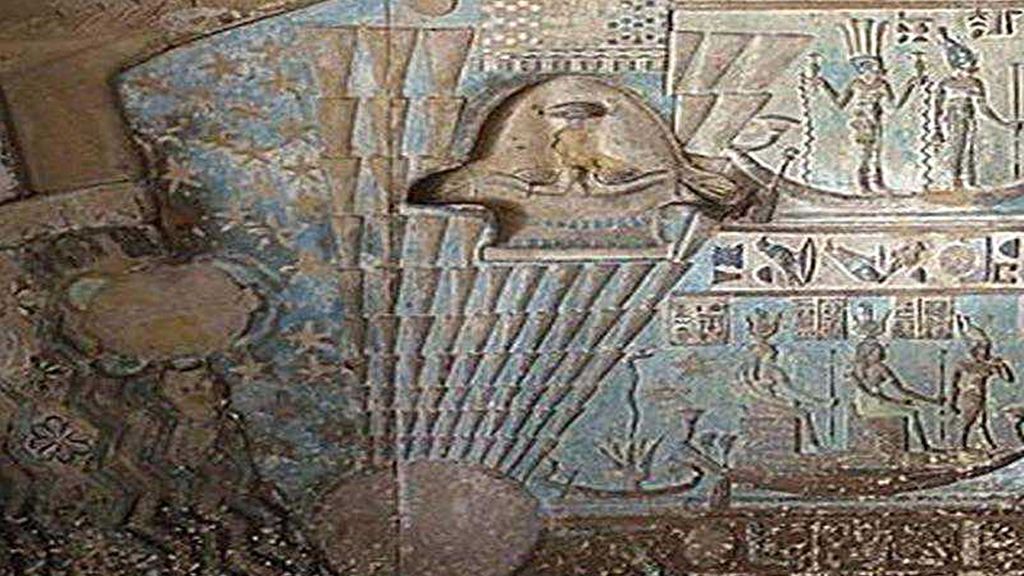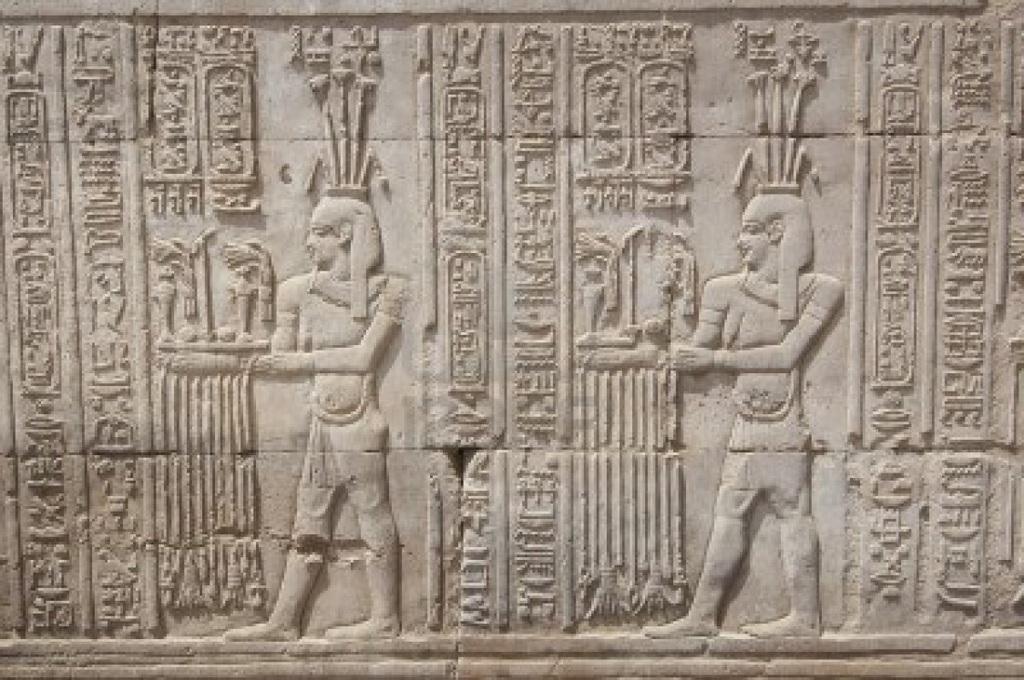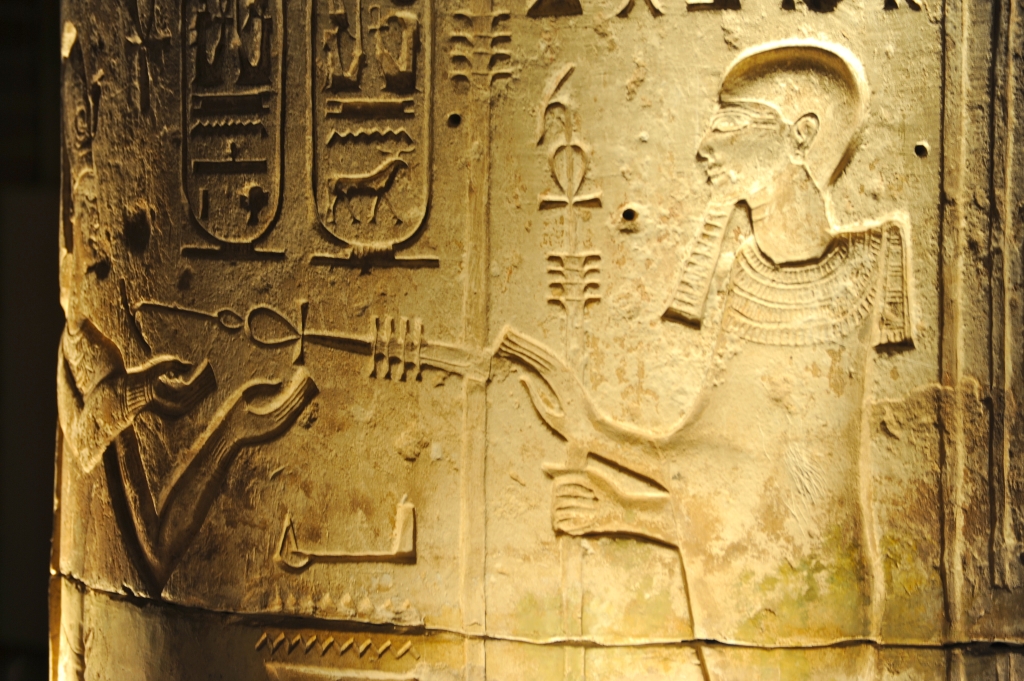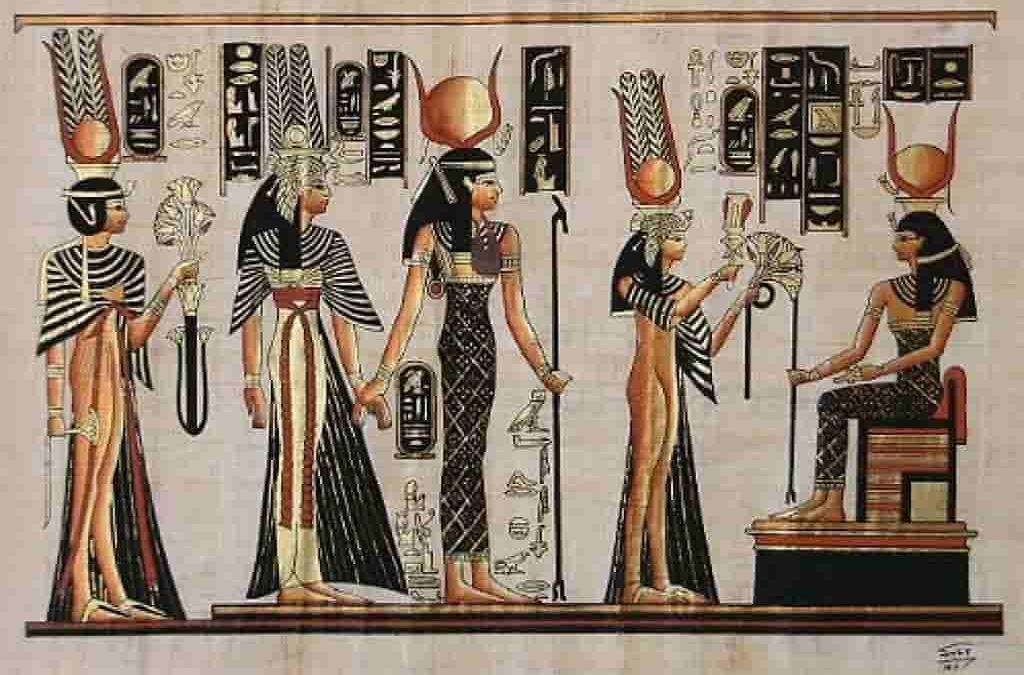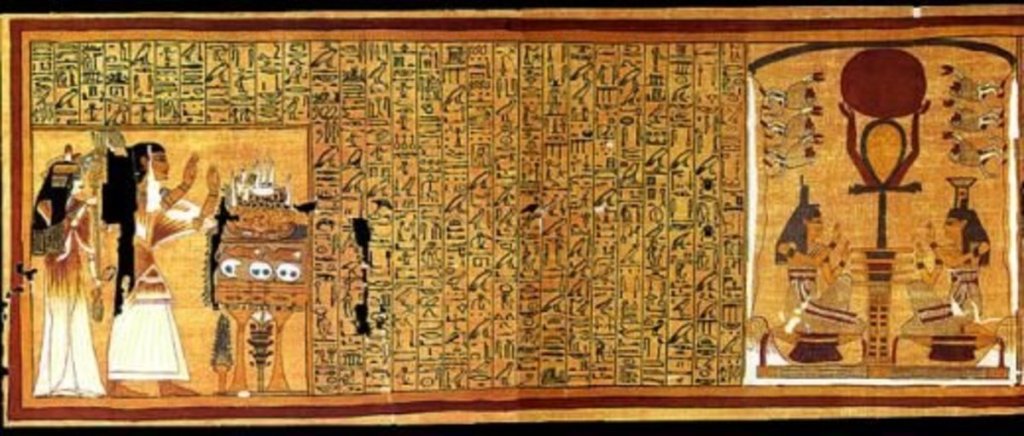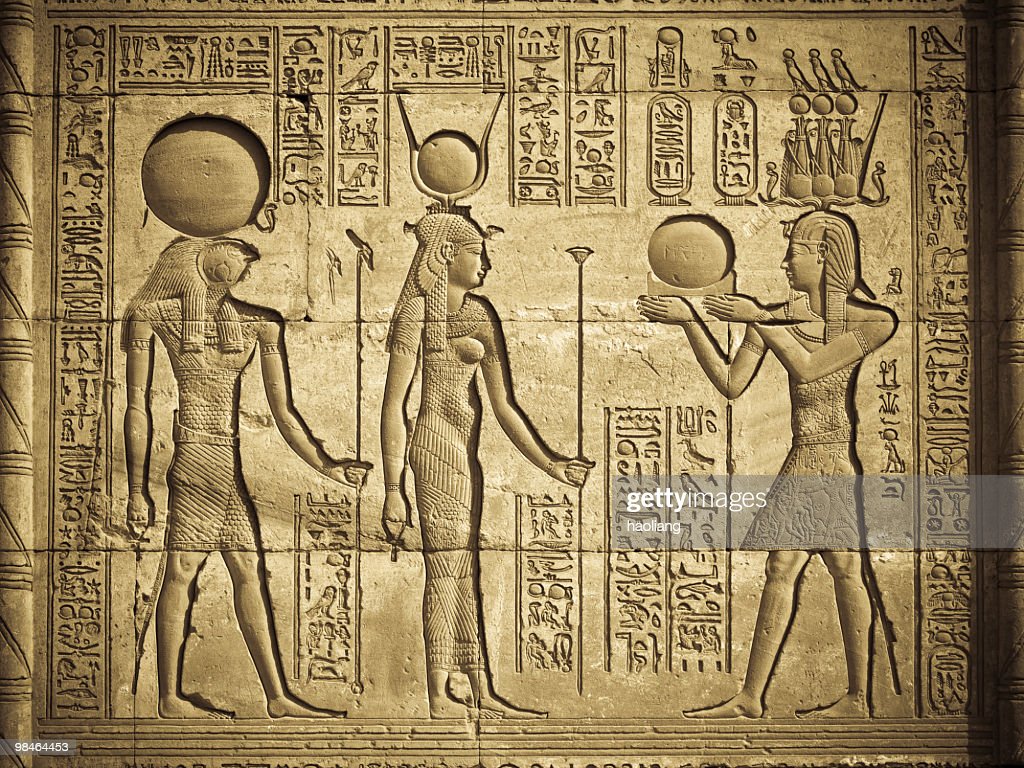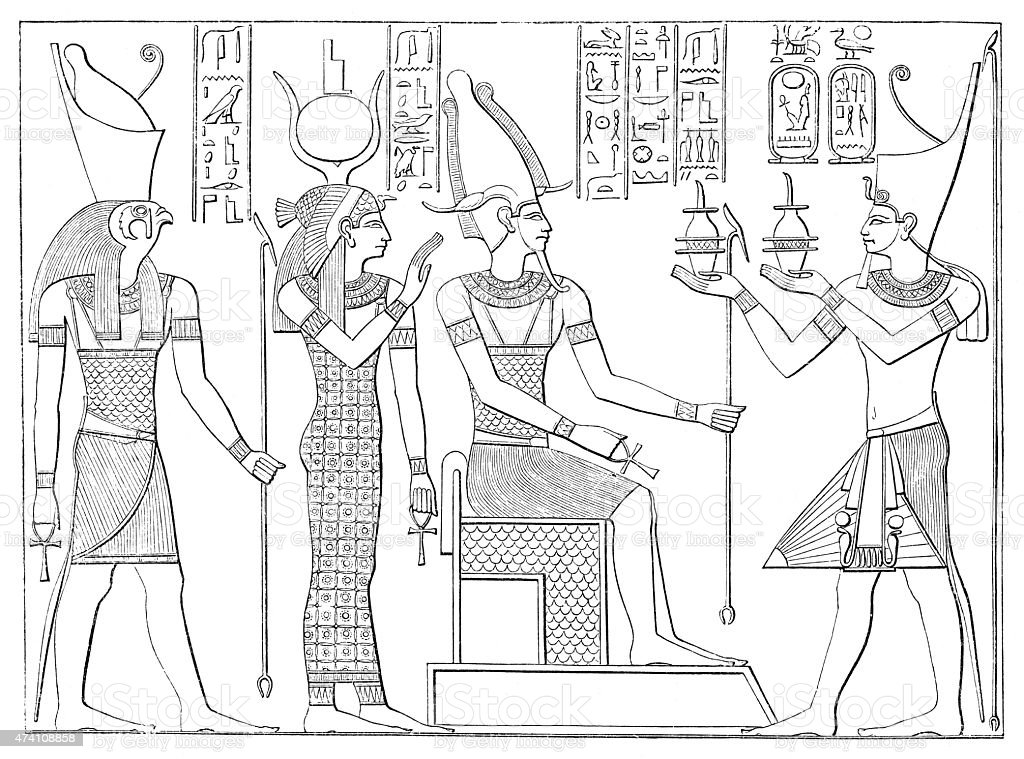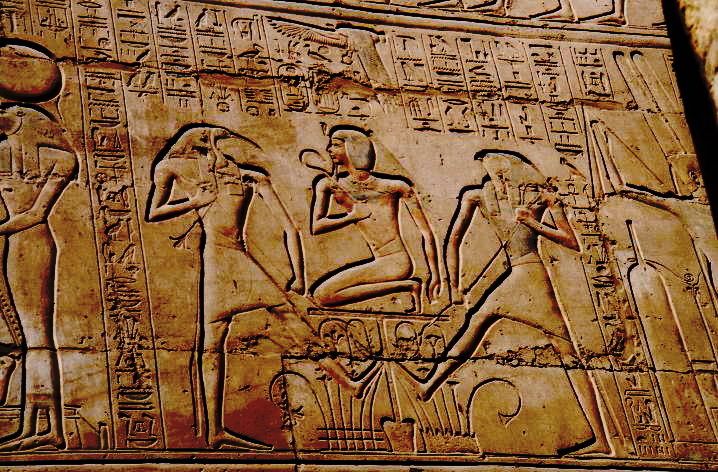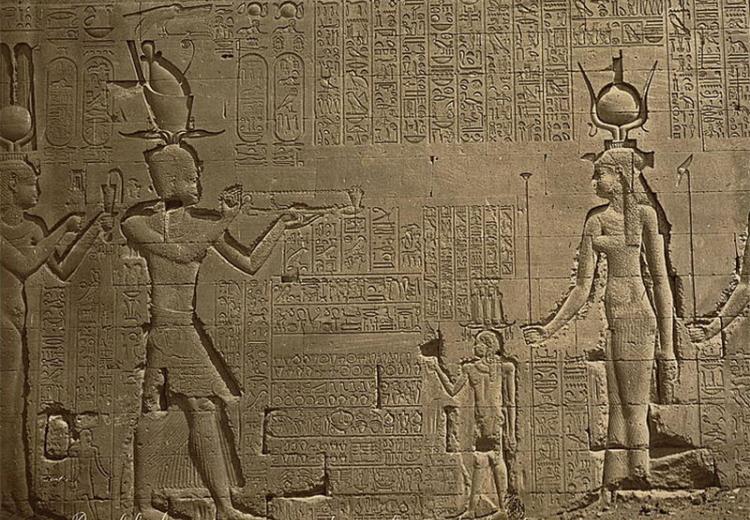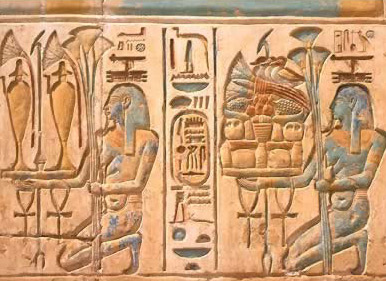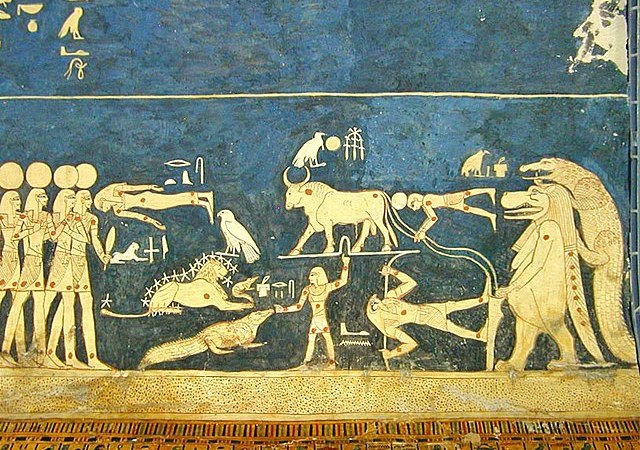I want to state up-front that I have no training in Egyptology. I am an engineer, providing an engineer’s perspective on what we are about to discuss.
The topic is electricity, of course, and how it was used in ancient Egypt. We’ll look at evidence that’s been overlooked. I think it will enlighten our appreciation for the Egyptian’s engineering sophistication and refine our understanding of their spiritual beliefs and practices. This is not to suggest anyone else is wrong, simply that interpretations may be incomplete because of what has been overlooked.
We’re going to focus on the tools being used by the characters in certain hieroglyphs. It’s the character’s tools and attire, and how they are portrayed being used that we are concerned with. This collage of images depicts some of the tools. They are the Was Staff, the Djed, the Ankh, the Crook and the Flail. A few others will be introduced later, but some combination of these appear to be employed in most of the depictions we’ll look at.

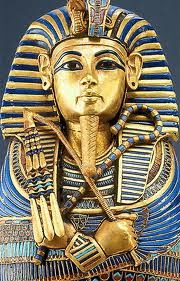
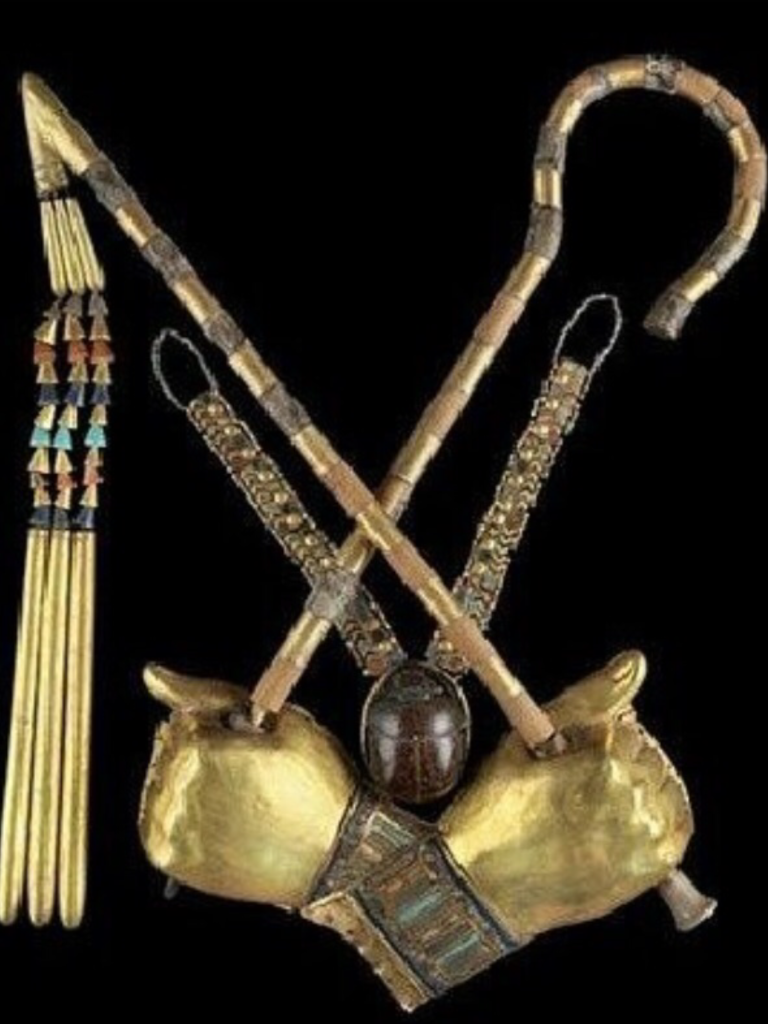

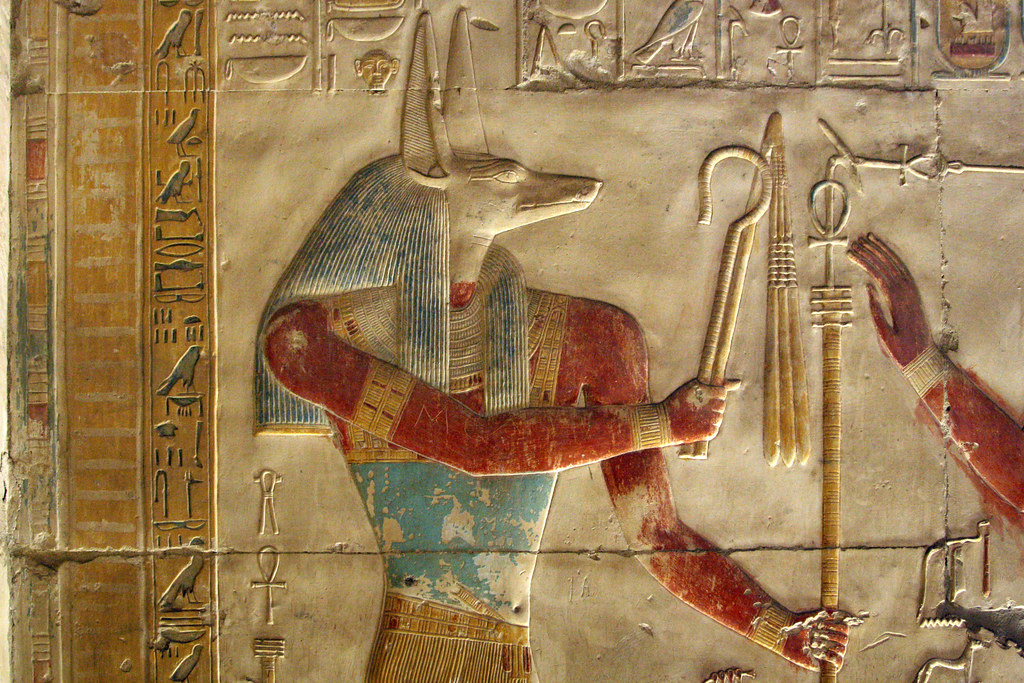
The common attire is the headgear and collar. The headgear varies widely, but common features are the protruding antennas, usually in the form of cobras at the forehead; and the shape, although variable, always forms an absurdly voluminous envelope about the head. The collar covers the chest, made of concentric rings of metals and beads of precious stones. Metals, especially gold, were used profusely, in both the attire and tools, as were minerals such as Lapis Lazuli.
Notice the positioning of the tools in the next group of images. Notice how the flail is held brushing the shoulder. The crook is held to the neck. And the characters are in the act of touching each other using their hands, nose, staff and ankh. The Ankh is often depicted held a fraction of an inch from a character’s nose by the hand of another.

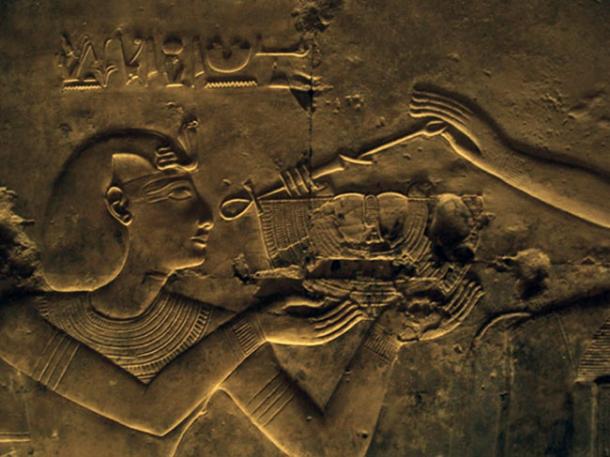



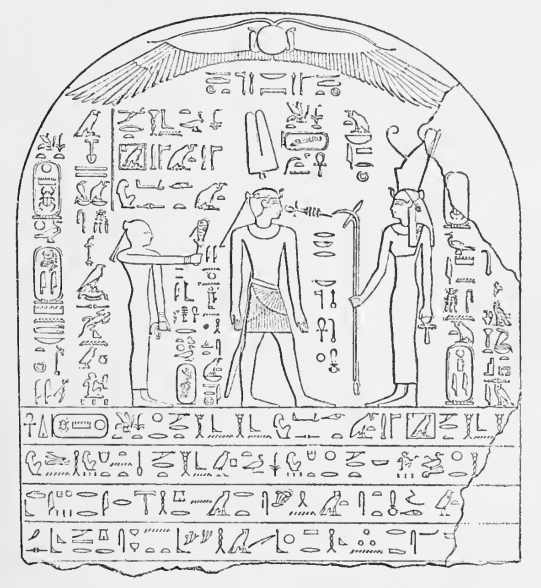
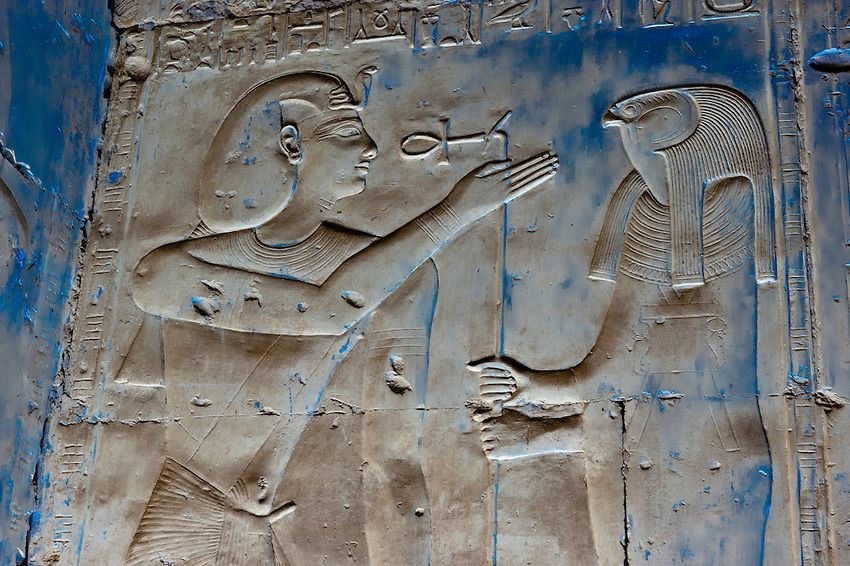
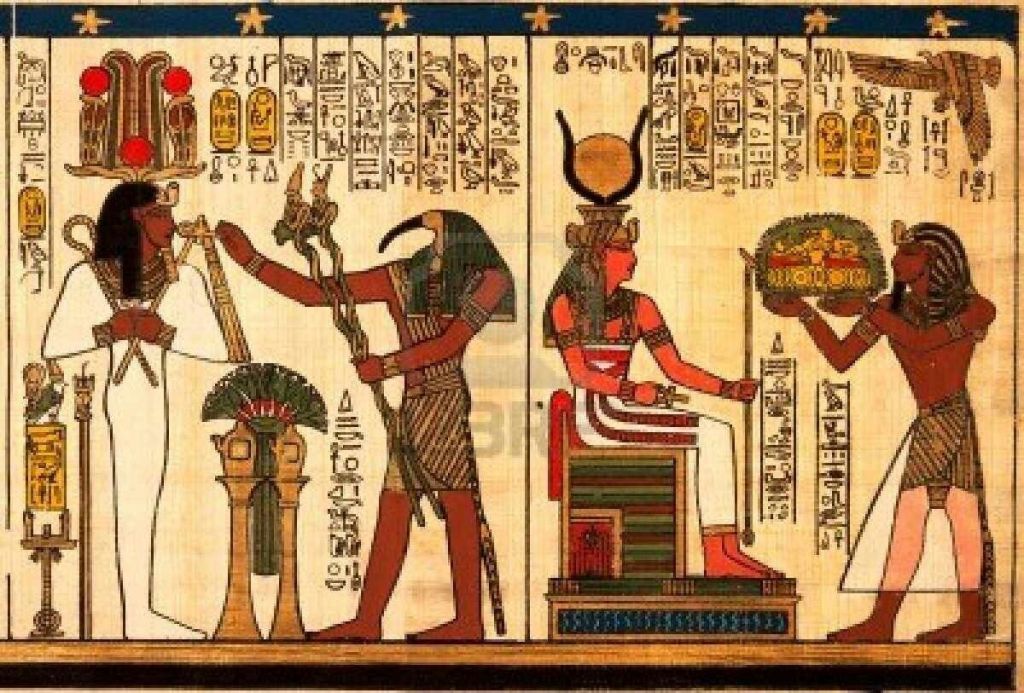
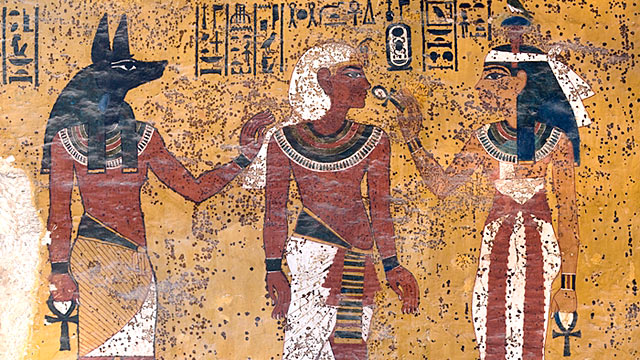
What I’m suggesting is they were shocking each other. They are depicted in these images passing electric currents through each other, using their hands and tools to make connections.
To my limited knowledge, no one has mentioned this before. There have been speculations about use of high technology concerning megalithic construction, and even that pyramids may be a type of electrical generator, but I’m not aware that anyone has suggested they were zapping themselves.
Yet, that is what is being depicted. It’s very simple really. In each of the images the characters are in the act of making connections between themselves, the floor, their headgear, and some brushy-looking implement using the tools. The brushy implements appear in grounded stands, bowls, or held in hands, like the flail, or a fan. The Pharaoh is often depicted being fanned by courtiers.
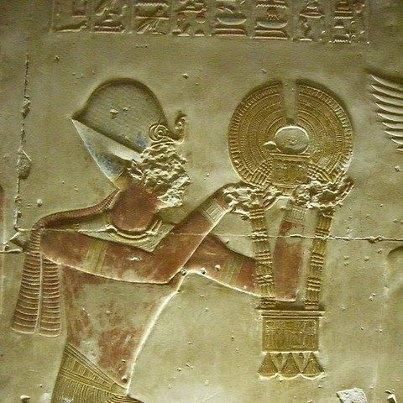

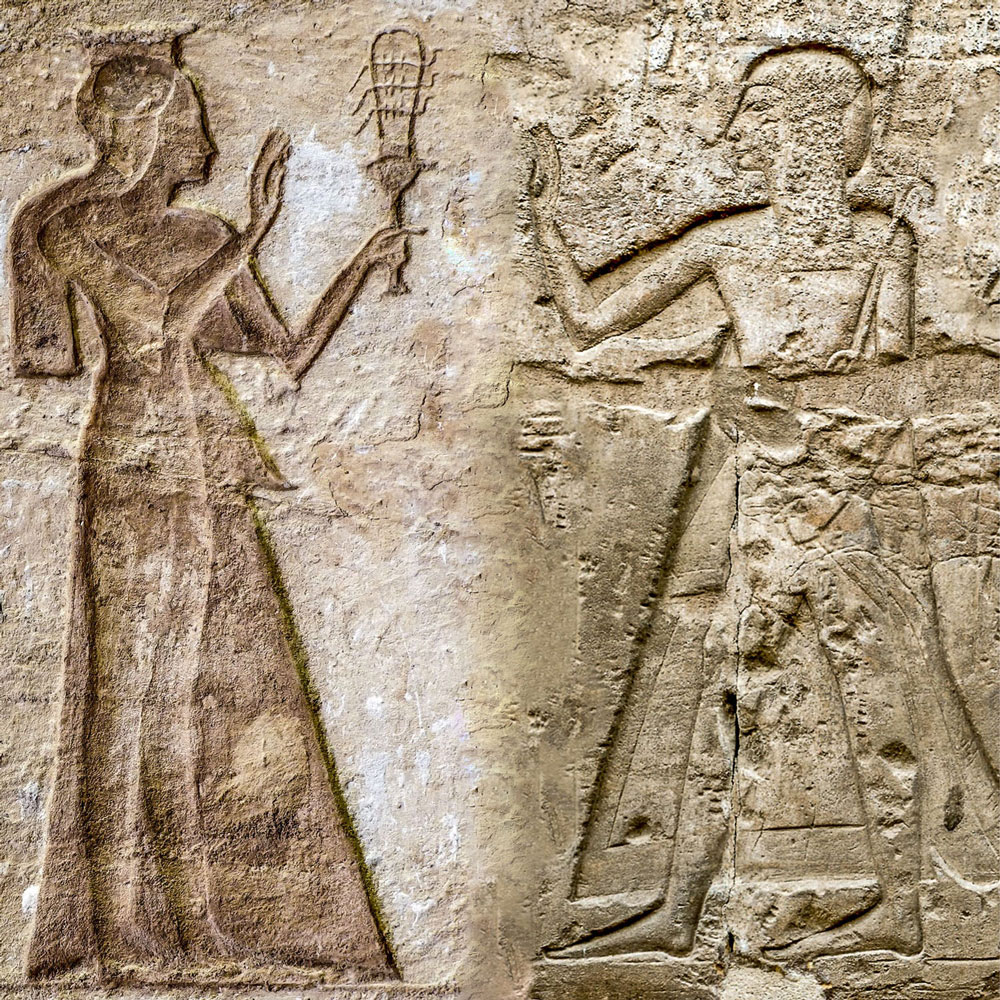
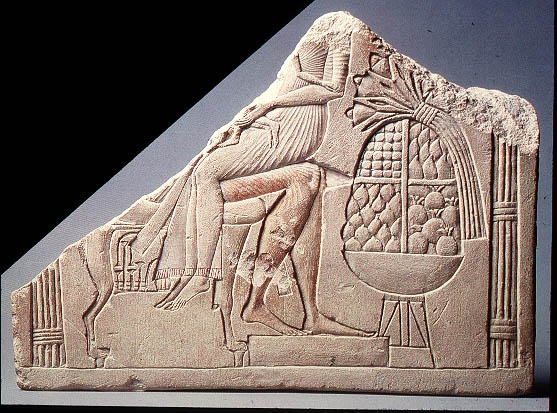
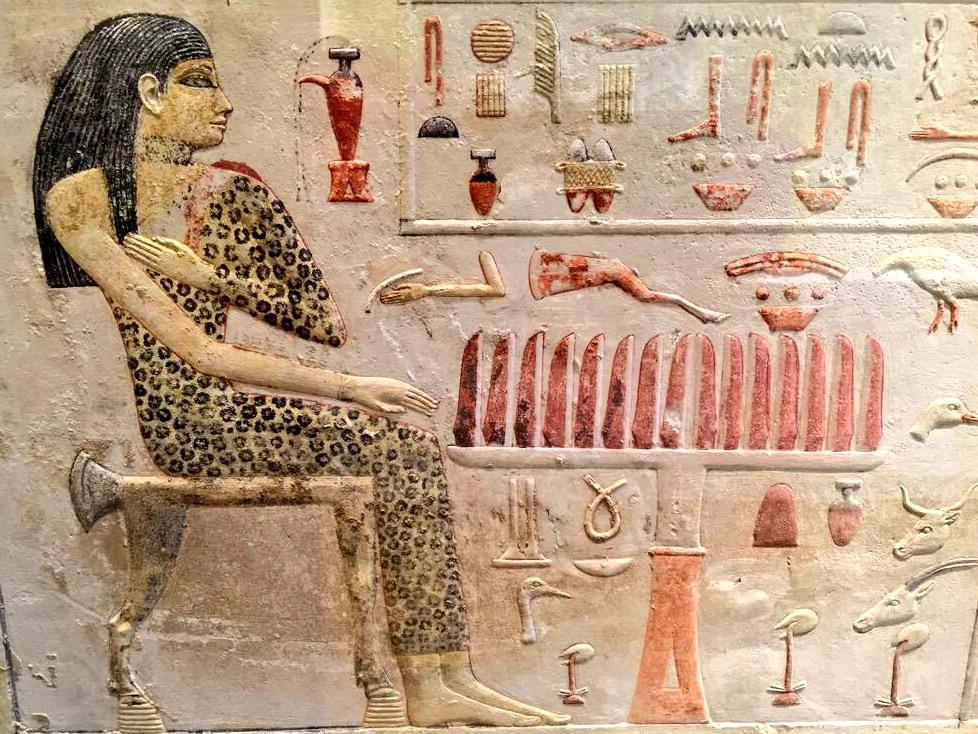
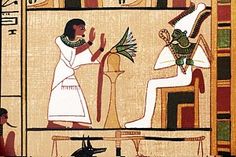
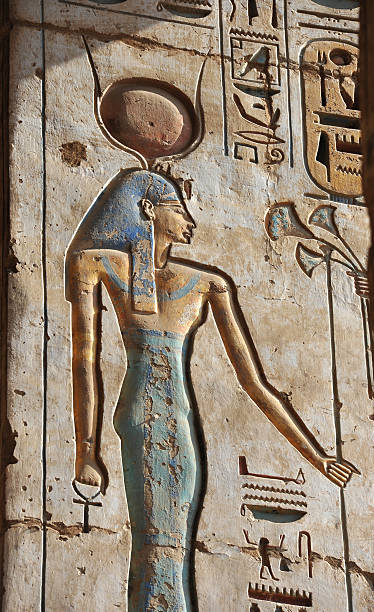
I know convention is they depict Lotus flowers, Nile Lilies and such, and perhaps they are. My observation is they are charge collectors. Like when one rubs a wool sock on a balloon, it builds static charge. The brushy implements may be fabric, stalks of dry rushes, animal furs, or feathers; that put in motion brushing another material, develop a very high-potential surface charge like a Van de Graff generator.
Brushy implements appear as part of the circuit, being connected by hand, or tool. The headgear and collar is also meant to collect charge, with the large surface areas enveloping the head and an antenna to collect and concentrate charge at the “third eye”.


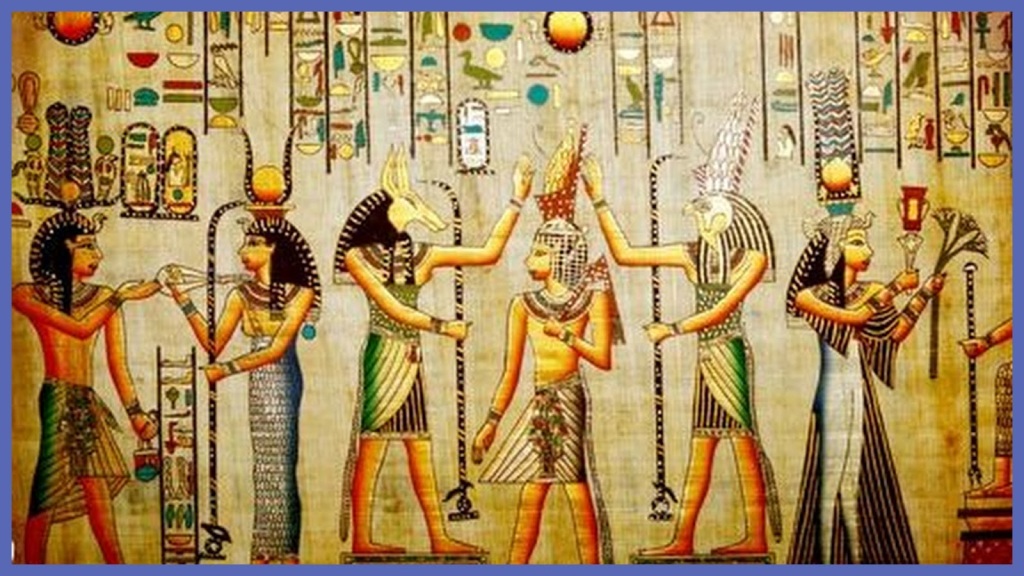
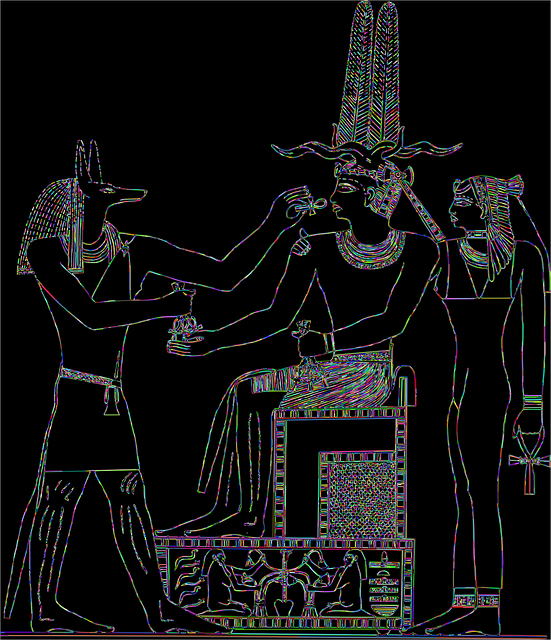
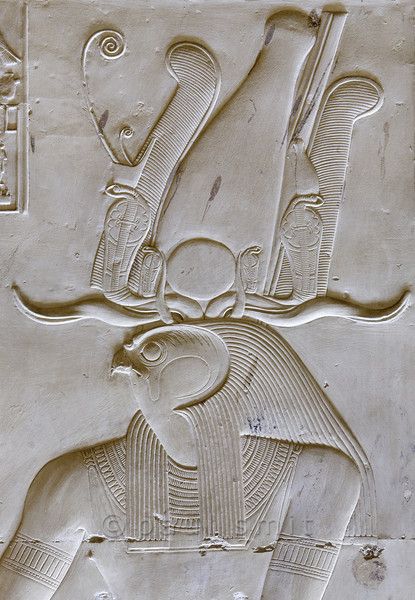
They are using these implements to build a huge static charge, which is a very easy thing to do by just rubbing things together using the right materials. The headgear and neckwear must concentrate charge and shape an electric field around the individuals head. It appears in some cases constructed to produce St. Elmo’s fire, or a Jacob’s Ladder above the head. In all of these depictions, they are creating a circuit to experience electric fields, frequencies and currents around their heads.

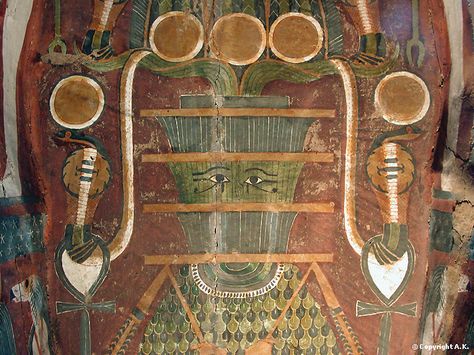

Has anyone noticed this before? An awareness that Egyptians used electricity is not novel, but head zapping? It’s known they made batteries because there are artifacts. And they electroplated everything with gold, like it was powdered sugar. But has anyone ever suggested they were shocking their brains?
There are interpretations of these same implements as sonic frequency devices, which makes exceptionally good sense. However, for a good buzz, electric fields and discharge do the same thing, way better. Besides, holding a vibrator in the hand dampens the vibration unless it’s being fed energy. The depictions show circuitry between characters, the floor, furnishings and implements providing continuity between points of charge collection and generation.
Almost anyone outside of consensus science has concluded, by now, that the “Dendera Lightbulb” hieroglyph is depicting something electrical. With what we’ve just discovered, let’s take a closer look at that particular set of hieroglyphs.



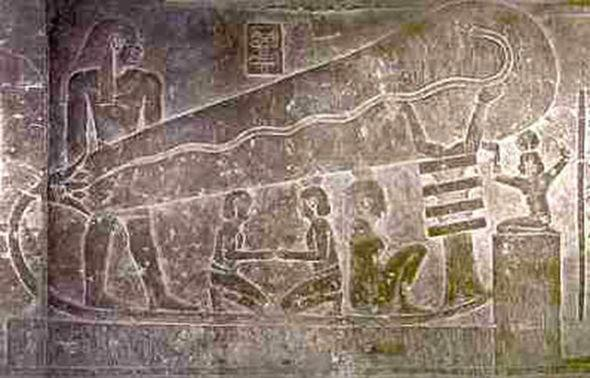
The entire scenario depicts a circuit, with the Djed delivering capacitor charge to what appears to be a giant lightbulb. It clearly shows halos of plasma discharge between the characters and the bulb – into their heads. The bulb is a giant plasma ball being charged by a big-ass capacitor. There is circuitry, frequency and discharge into peoples heads taking place here.
The Djed appears to be a primitive plate capacitor, its plates likely made with a crystalline stone to store charge, separated by air gaps and a dielectric core, stood on an isolated, central pillar. It is portrayed as part of the circuit, often in context with characters using bare hands, or bladed connectors held to jump the plates.

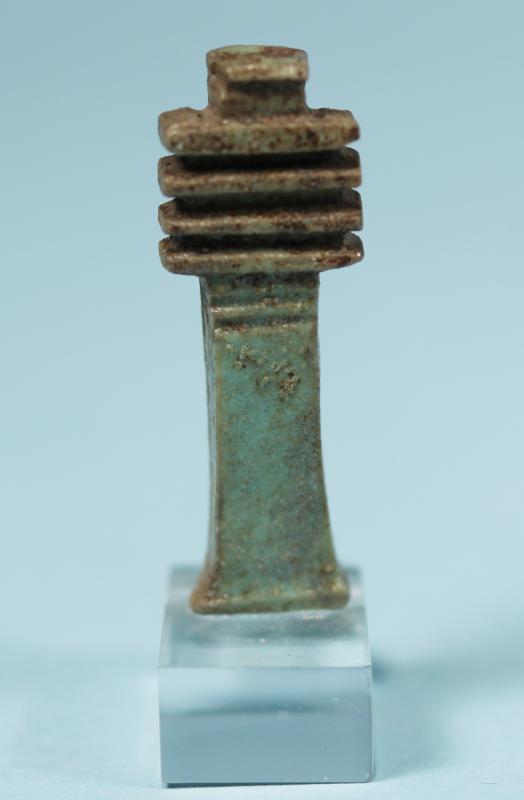

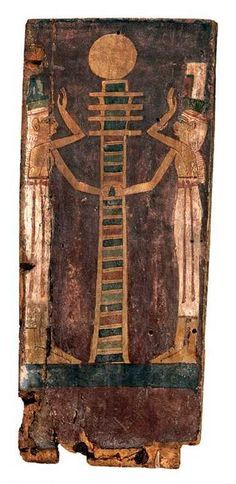
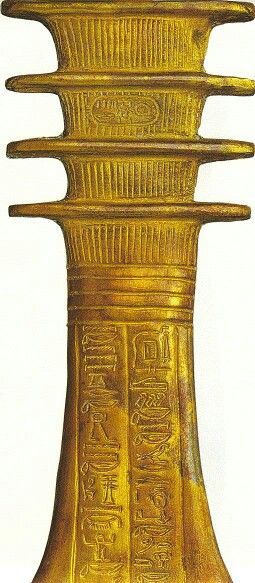
The ankh, staff, or hand is used to deliver the spark and control continuity for the energy to flow through the individuals. We can confirm people in those times considered the staff a type of spiritual tool, used to convey magical power, because it is explicitly depicted that way not only in Egypt, but in the Bible and other works. Electricity would fill that bill.
The Ankh is considered “the Key of Life” by experts. A tool the gods used to deliver the spark of divine life to the Pharaoh – through his nose, for some reason. Spark of life indeed. Zap your sinus cavity and you’ll feel alive alright.
There is another type of tool that appears to be a lamp, or incense burner. In context with the other implements, I think these are tools that produce ionizing flames. Perhaps they contain reactions using carbon black, magnesium, oils or other reactive elements. Notice the tools in the images have two parts, one being a wand that contacts the flame, and the lamp itself. Perhaps the wand is a catalyst, or flux to generate ions when heated and the other tools are positioned near to accumulate charge. These look to be depictions of preparing the tools, by saturating, or de-saturating them of charge before use. De-saturating makes perfect sense as an act of purification, to exhume any lingering ‘spirits’ before the next use.

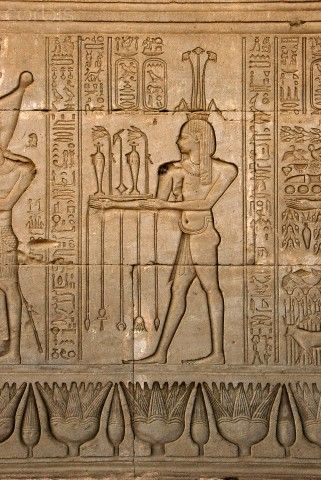

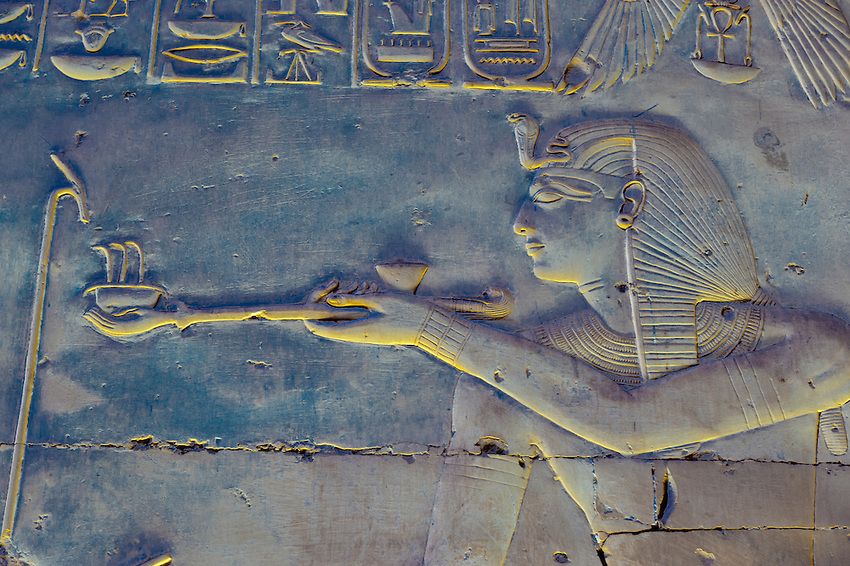
In the next painted image note the circuitry. Note that some characters are on pedestals and some not. Note the same pattern and color of dotted and hashed lines used for the hooked staffs are used to outline the headgear. It appears they are touching to flow current through their arms and headgear using staffs and other tools. The motif might represent how charge diffuses through the circuits.
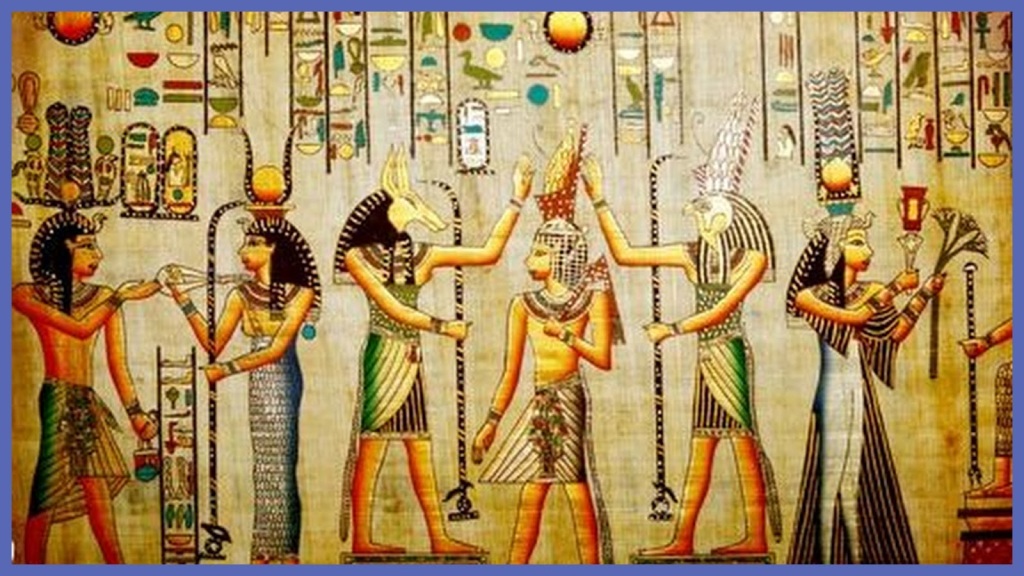
It appears the central characters are about to transfer charge they have built-up to the Pharaoh’s hat, while standing on pedestals. The Pharaoh is grounded and his crown and flail are a different color, perhaps to indicate he’s ‘purified’ with the opposite charge and ready for a high voltage connection to the gods.
And there are three cartouche suspended at headgear-level, and two orbs above that, also bordered in this pattern. They look to represent physical objects present in the diagram, and not just bordered text. There are instances it is hard to tell if a glyph is showing a text box, a physical item, or both.
Perhaps we miss a layer of meaning and the cartouche represent prayer wheels that, when spun, generate an electric field with the grounded floor, enveloping the characters and amplifying voltage potential. The shockers are isolated on the pedestals to generate a step voltage between them and the Pharaoh, who is grounded.
Or, perhaps charge is generated in a dedicated room with batteries and capacitors and then delivered through the wall by an electrode.
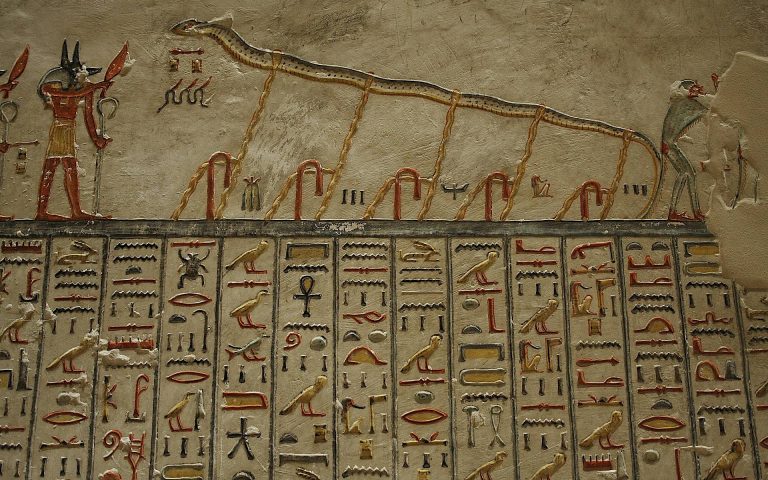
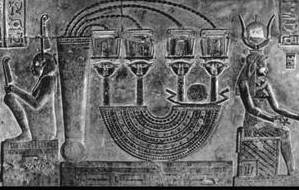
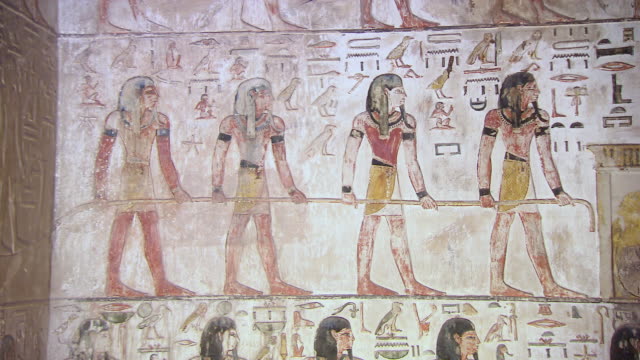
It appears to me, the Pharaoh liked to get shocked. The bigger the better. Maybe this was how he proved his strength; his divine connection to the power of the cosmos, and his ability to share that energy with his people. It seems entirely consistent with established interpretations that they were using electricity this way, and even confirms why they considered these hats and tools so significant.

They were celebrating “the spark of life” from the standpoint of people who used electricity in their lives and understood they were dealing with the cosmic force. I think it’s we who get lost in the centuries of layered dogmas about their many gods and underestimate the profound understanding of nature they possessed. I think this is true of other ancient cultures, and we, the linear reasoning, scientific reductionists have long ago accomplished the goal of reducing our awareness.
Another aspect to consider is these electric ceremonies are being conducted, one can assume, in temples constructed of megalithic stone. Several glyphs portray pedestals the characters sit on, or touch. Some appear to be inside some kind of chamber. These rituals may have been conducted in the bowels of the earth, inside granite chambers, or in the open air on platforms that amplified Earth’s natural electric field.
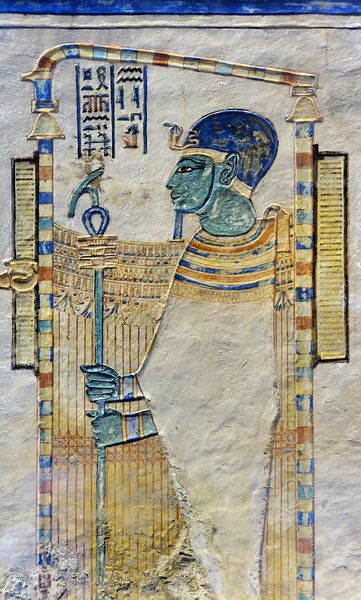
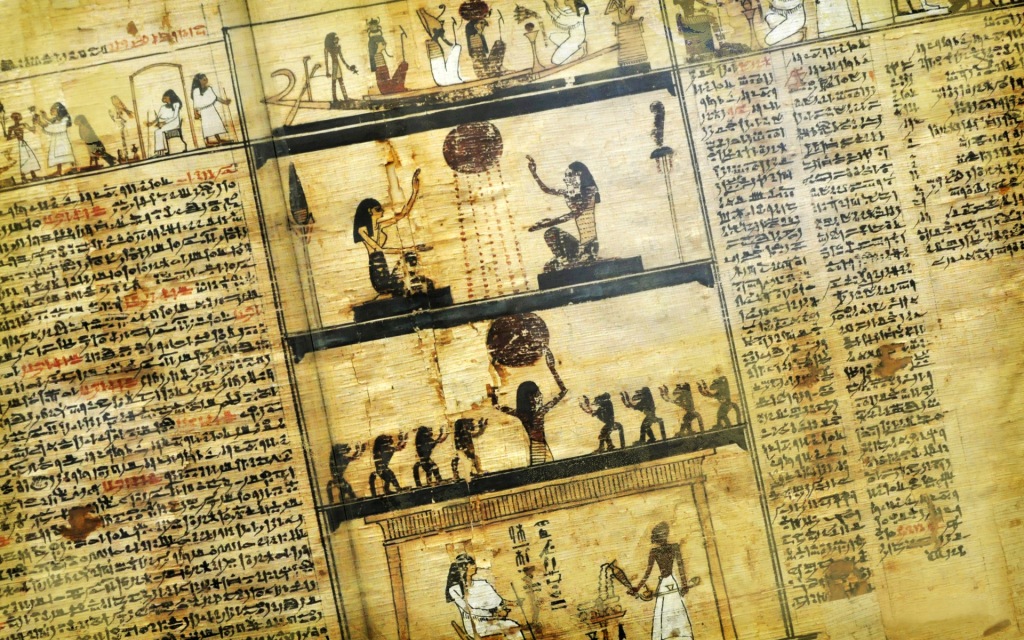
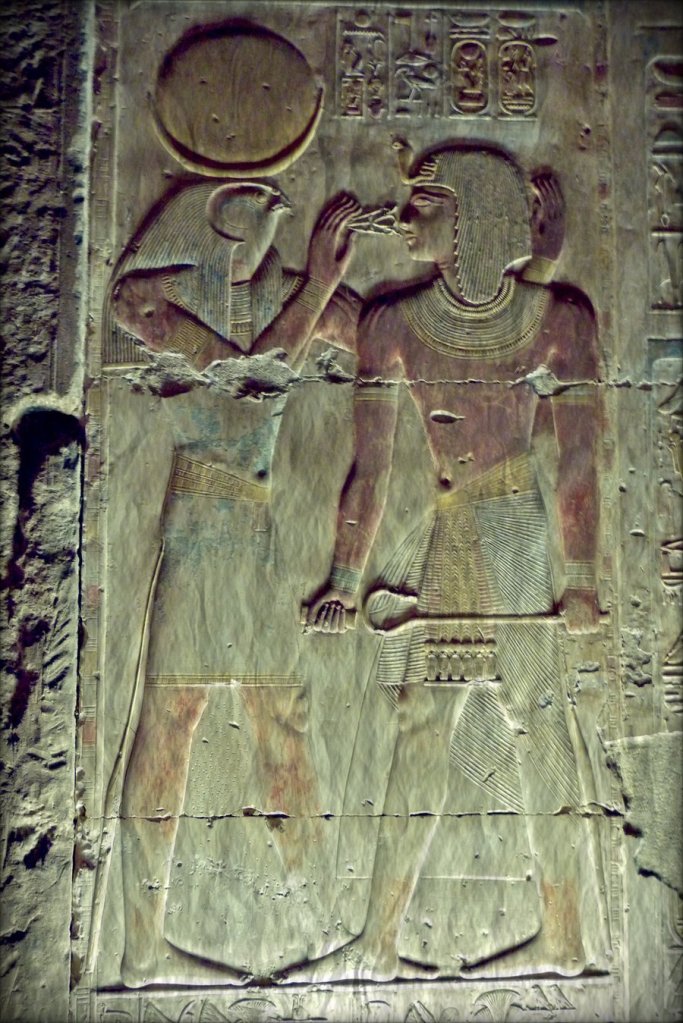
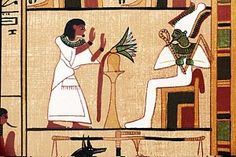


If they were in chambers, using ionized gases, they would necessarily be rarefying the air. This could enhance plasma activity tremendously, but might have consequences such as death by suffocation, or toxicity. Perhaps they generated a tolerable gas like helium. Or perhaps the exposure was limited to an anteroom where a brief purification ritual took place. It’s something to consider.
The floors are key to every circuit. We can assume they are stone, and likely conductive. Seated characters are often on isolating pillows, or pedestals, building potential before grounding their tool to the floor.
Characters are also seated on low thrones that appear grounded to the floor and layered in appearance, as if they could be a type of capacitor. That, I imagine would send a shock up their spine right through the top of their silly hat.
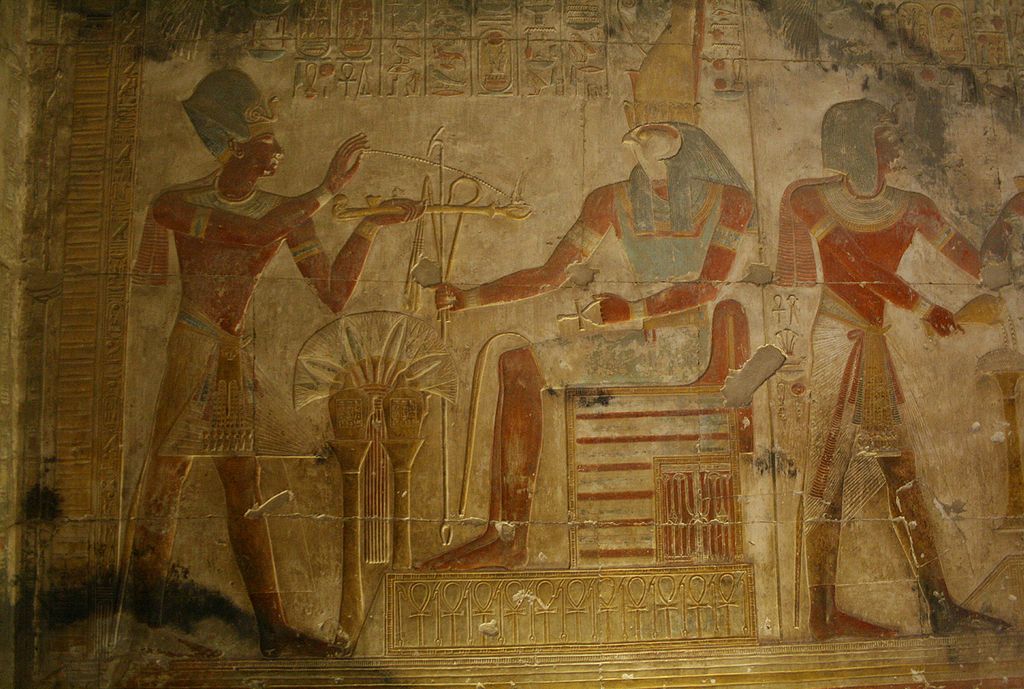
Passing current through the spine, sinuses and skull has some exotic effects. We know it works for lobotomy. Lightning victims generally have bad effects. On the other hand, there are “marital aides” made with plasma electrodes, so sparks can’t be all bad. Hopefully, the Egyptians knew how to get positive results.
I believe their use of granite, sandstone and limestone for temples, and all manner of subterranean vaults; their placement over aquifers and other water features; and their locations around the world were chosen strategically to make use of Earth’s electric field.
What I can say for sure, as an engineer, is that the little copper, bronze and iron connectors found in megalithic stone foundations all over the world have no structural purpose. Any force large enough to move several tons of stone would snap these pins in a heartbeat. The only rational purpose is to provide electrical continuity between stone blocks to distribute charge evenly and not cause unwanted sparks at the joints.
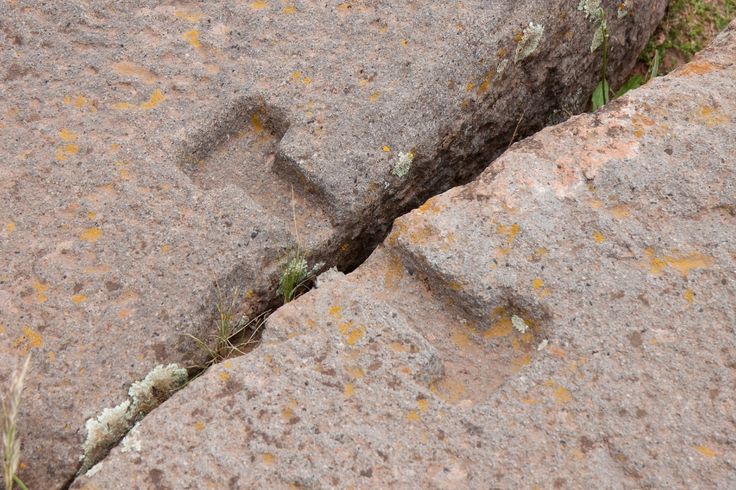

The same is true for why they meticulously mated stones together without mortar – to provide solid continuity. And the enigmatic nubs left on otherwise finished stones is not for lifting, or because the stone workers got lazy. They are positioned around gates, doorways and passageways to deflect discharges away from where people walked.
An energized stone, especially one being struck by lightning, will absorb and discharge current, and one doesn’t want that to happen across the doorway you are walking through. So the nubs are collector points for charge to accumulate and discharge safely, and help desaturate the stone near the seams, openings and walkways they are placed around.

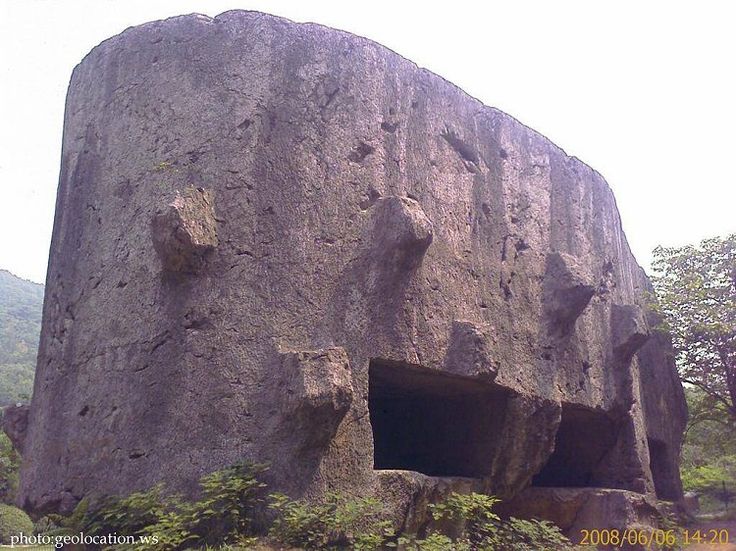
There is no doubt in my mind that ancient Egypt was a different world than we know, with a different Earth potential, a different frequency, different energy, a more electrified environment compared to ours; and they used it in ways we must struggle to imagine, because it is a world foreign to us.
The article linked below sheds some light on ancient construction practices.
MIT Engineers create supercapacitor from ancient materials.
This article describes how MIT Engineers made a capacitor from cement, water and carbon black. Their experiments show a slight doping of carbon black with concrete allows it to hold a useful capacitor charge. The team calculated that a block of nanocarbon-black-doped concrete about 3.5 meters a-side can store about 10 kilowatt-hours of energy, enough for the average household’s daily use. In other words, your home’s foundation could be your energy storage device with this technology.
Likewise the Egyptians, and other megalithic builders, used granites and other stones with natural electrical properties. Granites are composed of silicates – silicon and oxygen compounds with a bit of other elements mixed in that form crystals and platelets that readily diffuse charge. Granite is highly conductive, and piezo-electric, which means if it’s vibrated it generates electric current.
Sonic vibration would be the easiest way to stimulate the stone and give it a frequency. It would generate a direct current, pulsed by the resonating, sonic frequency. It appears everything they did was based on static charge and discharge, obviously because Nicola Tesla hadn’t been born yet.
I can imagine, deep in the bowels of a temple, being surrounded by granite’s natural energy, enhanced by sonic vibrations delivered by trumpets and drums from the pageant outside the chambers. Waiting patiently for my spiritual awakening, while incense fills the room with dense aroma, and the only sound is a hum and crackle as priests turn tables of feathers against my skin, speaking incantations. These things fill my mind with hallucinations; charge my body with dry anticipation; and encase my head with a buzzing presence.
Then: Wham! Somebody pokes an ankh at my nose and fire shoots through my butt to the top of my head, energizing chakras I didn’t know I had. I could see someone doing that – not me – somebody who deserves it, like a Pharaoh. The Mayan Kings stabbed their penises, which sounds a lot worse.
Perhaps electric current stimulated a spiritual experience. Perhaps it enhanced psychic ability. Perhaps it stimulated psychedelic experiences. Perhaps all three. Maybe that’s why their gods have dog heads. If one thinks about it, head zapping might be considered for many ancient mysteries.
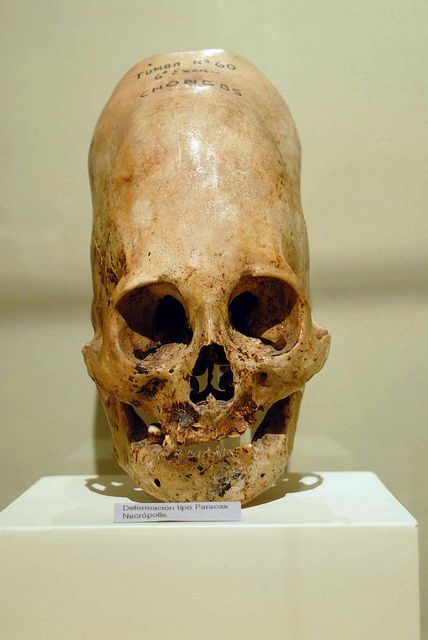
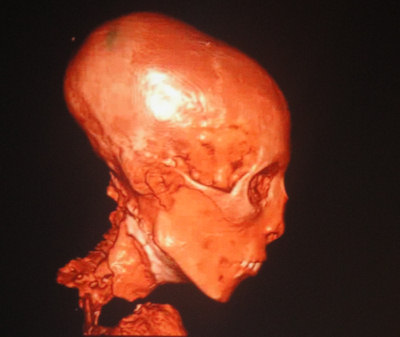
Do we really accept these monstrosities were caused by binding a baby’s head? Or did head zapping cause it to unnaturally grow this way? Did the Egyptians really make astronomically complex constructions from stone by pounding and cutting with copper saws? Or did they employ electric currents with the stone to make it disaggregate, and therefore be more malleable? These are the questions that I ponder when I look at the works of ancient Egypt. I’ll close with some more images where I see elements of electric circuitry. I encourage you to look with ‘electric eyes’ and see what you find. .
